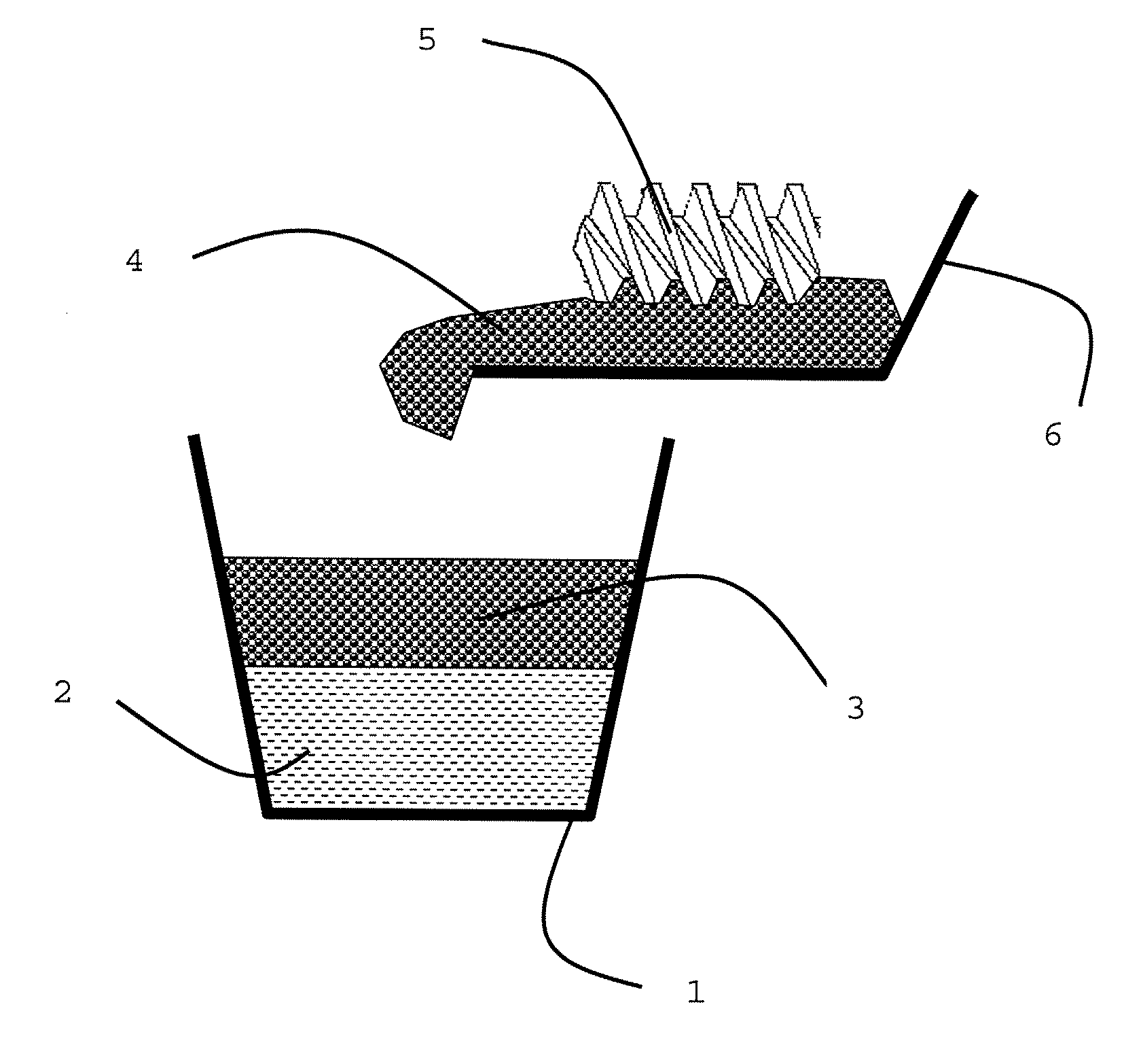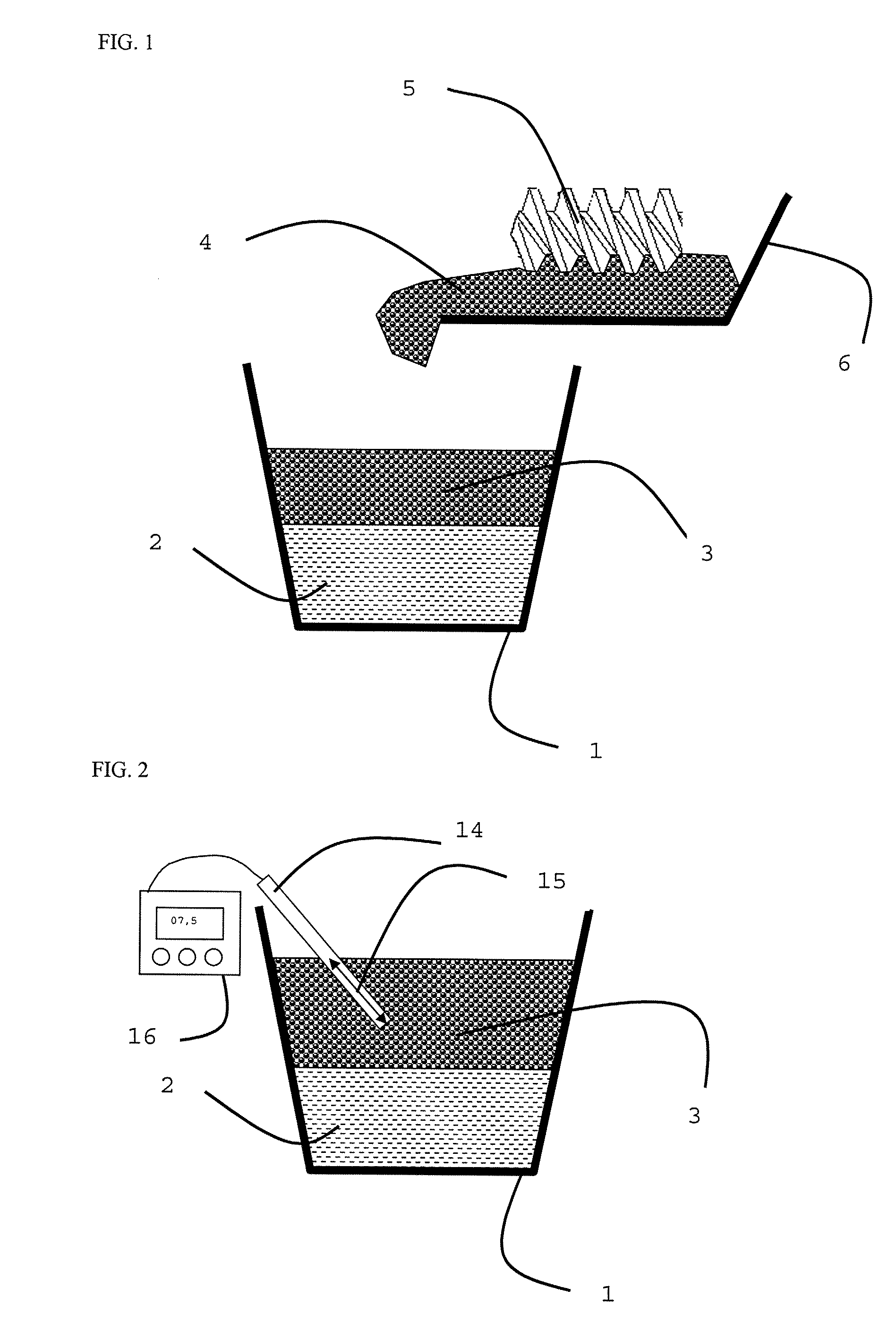Method for recycling aluminum-lithium-type alloy scrap
a technology of aluminum-lithium alloy and scrap, which is applied in the direction of process efficiency improvement, metallurgical equipment, chemistry equipment and processes, etc., can solve the problems of large amount of machine scraps or chips, difficult to recycle scrap directly, and partial loss of metal valu
- Summary
- Abstract
- Description
- Claims
- Application Information
AI Technical Summary
Benefits of technology
Problems solved by technology
Method used
Image
Examples
example 1
[0038]Two tons of scalping chips (“scrap”) of alloy 2098 were inserted using a worm into an IDEX® oven so as to be degreased. This scrap was characterized as having a density of 0.3 t / m3. A magnetic sensor was used at the inlet of this oven so as to minimize accidental magnetic pollution.
[0039]In an induction furnace with a power supply current frequency of 70 Hz and with a capacity of 6 tons, a liquid metal bed was prepared from 3 tons of massive waste of alloy 2098. (For other similar trials of melting and successive casting operations, the residue of the previous casting, or heel, was used as the liquid metal bed. This liquid metal bed was brought to a temperature of between 700 and 780° C. Two tons of scrap were then added at a rate of 6 tons / hour. A floating layer with a stationary thickness of 800 mm was obtained. Argon was added during this loading step for certain trials. The conditions of all of the trials are summarized in Table 1. When the scrap was entirely loaded, prote...
example 2
[0045]To better understand the protective effect of the floating layer above the liquid metal in the invention, measurements were undertaken of the oxygen levels within the floating layer using a sensor and a specialized apparatus. FIG. 2 diagrammatically shows the methodology implemented. A gas sampling probe 14 was inserted into the floating layer 3 to a predetermined depth 15. The oxygen content was measured using a gas analyzer 16 at a predetermined time, t1, after insertion. This time after insertion may influence the result of the measurement because the insertion of the probe into the floating layer locally disturbs the composition of the atmosphere. The results obtained are shown in Table 3. It is noted that an effect on the oxygen content can be observed for an insertion of the probe to a depth of 50 mm. For an insertion to a depth of 120 cm and a time after insertion of 7 min, an oxygen content diminished by a factor greater than 3 can be reached. These measurements show t...
PUM
| Property | Measurement | Unit |
|---|---|---|
| thickness | aaaaa | aaaaa |
| thickness | aaaaa | aaaaa |
| thickness | aaaaa | aaaaa |
Abstract
Description
Claims
Application Information
 Login to View More
Login to View More - R&D
- Intellectual Property
- Life Sciences
- Materials
- Tech Scout
- Unparalleled Data Quality
- Higher Quality Content
- 60% Fewer Hallucinations
Browse by: Latest US Patents, China's latest patents, Technical Efficacy Thesaurus, Application Domain, Technology Topic, Popular Technical Reports.
© 2025 PatSnap. All rights reserved.Legal|Privacy policy|Modern Slavery Act Transparency Statement|Sitemap|About US| Contact US: help@patsnap.com


